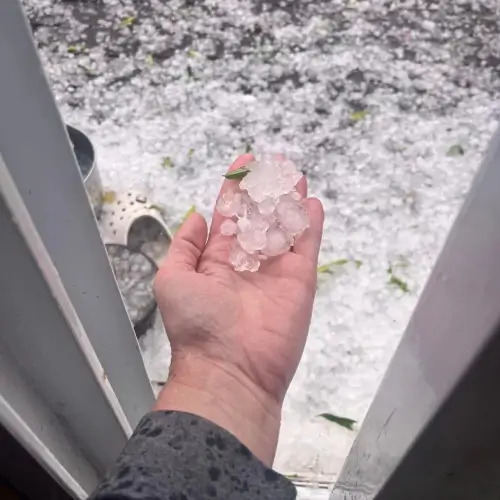How to Prep Your Roof for Omaha Storm Season with These Roofing Tips
What’s the best way to prepare your roof for Omaha’s storm season?
Start with a pre-season roof inspection, trim nearby branches, and clear your gutters—because in Omaha, storms aren’t a matter of if, but when. With hail, wind, and heavy rain common from May through July, early prep is key to protecting your home.
Here in Omaha, major storms aren’t a matter of if—they’re a matter of when. Our area experiences the full fury of Mother Nature, with frequent hail storms, high winds, heavy rains, and storms delivering other threats to roofing such as fallen trees and branches.
To best protect your home, Anchor Roofing recommends taking some precautions to prep your roof for the Omaha storm season. Here’s how to weather the storms.
What Omaha Storm Season Means for Your Roof
Storm season is a particularly difficult time for roofs here in Omaha. The peak season for storm activity runs from May through July or so, with May and June being the most active months. Threats to roofs include frequent hail, damaging winds and gusts, tornadoes, and even heavy rains.
At Anchor Roofing, we’ve helped hundreds of Omaha homeowners recover from storm damage. Typically, the best course of action is to move quickly when storms move through your area. You’ll want to schedule an inspection as soon as you can and repair damage promptly to ensure your roof is not vulnerable to further problems.
Pre-Storm Preparation Checklist
While damaging storms are inevitable, there are steps you can take to protect your roof and your home. Prep for the Omaha storm season by taking these steps:
- Review your insurance policy and contact your provider with any questions
- Trim tree branches near your roofline to avoid damage
- Clear debris from your gutters and downspouts
- Take lawn furniture and other items inside when storms (particularly windstorms) are predicted in your area
- Schedule a roof inspection before spring arrives to ensure your roof is in good condition
- Have an evacuation plan if you live in an area prone to flooding
What to Do Immediately After a Storm
After a storm passes, there are a few actions you should take. The most crucial steps are to document any damage you can, gather information about the storm, and contact a trusted roofer. Here’s a full list of steps to take after storms pass through your area:
- Inspect your property for any damage. Take pictures of affected areas, including your roof and damaged parts of your home exterior, such as siding.
- If possible, document the size of the hailstones that hit your area. Find the largest hailstones you can and snap some photos with them placed next to a measuring tape. Otherwise, look at weather reports for your area and take note of reported hail sizes.
- Look for leaks in your attic or ceilings. Water stains or excessive moisture all suggest roof damage.
- Don’t climb on your roof. All of your documentation should be done from ground level. Leave walking on your roof to the experts.
- Contact a trusted roofing professional. Anchor Roofing offers complimentary storm damage inspections, as do most roofing companies in our area.
If your roof is damaged, don’t delay a storm damage repair. The longer you wait, the worse the damage to your roof may get.


Avoid Scammers and Storm Chasers
Unfortunately, the aftermath of a major storm tends to bring out scam artists and storm-chasing roofers looking to make a quick buck while doing shoddy roofing work. The best way to avoid this issue is to already know what roofer you’re going to call ahead of time—ideally, a local roofing company with a strong reputation.
If you don’t already have a go-to roofer, though, here are some important considerations and questions to ask to avoid scams:
- Company Background:
- How long have you been in business?
- Are you a local company?
- Can you provide a local address and contact information?
- Licensing and Insurance:
- Are you licensed to work in this state?
- Can you show proof of liability insurance and workers’ compensation insurance?
- References and Reviews:
- Can you provide references from recent jobs?
- Do you have any online reviews I can check?
- Certification and Affiliation:
- Are you certified by any roofing manufacturers?
- Are you a member of any national or local roofing associations?
- Contract and Terms:
- What does the inspection involve, and what do you check for?
- What are the terms of any guarantee or warranty?
- Details of Service:
- How do you determine if storm damage repairs are necessary?
- What steps do you take to protect my property during the work?
- How do you handle unexpected repairs or cost overruns?
In particular, avoid roofers offering to “waive” your deductible at all costs. Although saving money upfront is tempting, both the roofer and the homeowner (often unknowingly) engage in insurance fraud when participating in this practice. Ethical roofing companies will never propose to waive your deductible, as it’s against the law.
Anchor Roofing Is Ready to Respond to Storm Damage
As seasoned Omaha roofers, our team at Anchor Roofing knows storm damage always lurks just around the corner. Our team is prepared for fast response times during the storm season, and our reputation for quality work and superior customer service is strong. What’s more, our inspection process is renowned for being incredibly thorough, leaving no damage unnoticed.
Storms don’t wait—and neither should you. Schedule your storm damage inspection with Anchor Roofing today!
